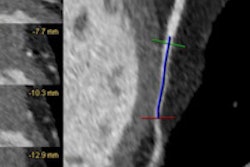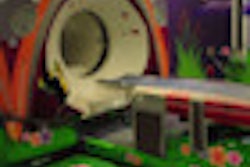A new study suggests that CT-based coronary artery calcium scans might be able to ferret out which patients with low levels of low-density lipoprotein cholesterol and high levels of c-reactive protein need treatment with statins.
The effect of the Justification for the Use of Statins in Primary Prevention: An Intervention Trial Evaluating Rosuvastatin (JUPITER) was to add about 6.5 million Americans to the group of patients eligible for therapy with rosuvastatin (Crestor, AstraZeneca, Wilmington, DE).
But a central question remains: Which of these patients would truly benefit from treatment with statins?
In a presentation at the American Heart Association (AHA) scientific sessions, Michael Blaha, MD, a clinical fellow in cardiology at Johns Hopkins University in Baltimore, suggested that calcium scans might supply the necessary information.
"The threshold for statin use in primary prevention has progressively decreased," Blaha said. "The clinical trial lowered the threshold lower by demonstrating that some patients with 'normal' low-density lipoprotein cholesterol -- less than 130 mg/dL -- and high c-reactive protein benefit from rosuvastatin."
By adding the calcium score to the treatment workup model, however, it might be possible to reduce to 19 the number of patients who need to be treated to prevent one event over a five-year period, he said.
In JUPITER, patients with less than 130 mg/dL of low-density lipoprotein cholesterol and higher levels of c-reactive protein were significantly able to reduce cardiac events when they were treated with rosuvastatin. But the subjects in JUPITER didn't undergo CT coronary artery calcium scans.
The American College of Cardiology/American Heart Association Consensus Statement stratified coronary artery calcium scores into three risk categories: A score of 0 equaled a low risk, a score of 1-100 indicated moderate risk, and a score of 100 or more indicated high risk.
In their study, Blaha and colleagues scrutinized the Multi-Ethnic Study of Atherosclerosis (MESA), which enrolled 6,814 men and women ages 45 to 84 without clinical cardiovascular disease. All the patients in MESA had the calcium studies performed.
Of the MESA population, 950 patients met the JUPITER criteria. Among patients culled from the MESA study, 47% exhibited a coronary artery calcium score of 0, 28% had a calcium score of 1-100, and the remaining 25% of patients had a calcium score of approximately 100 -- the high-risk group.
Of the 444 patients in the low-risk group, two coronary heart disease events were reported, for an event rate of 0.8 per 1,000 patient-years. Blaha said 267 patients met the moderate-risk score of 1-100, and there were seven coronary heart events in this group, for an event rate of 4.8 per 1,000 patient-years -- and a 4.8-fold risk of having an event when compared to the low-risk patients.
However, 25 events occurred among the 239 patients who demonstrated high calcium scores, an event rate of 20.2 per 1,000 patient-years and a 24.8-fold risk of having an event when compared to the 0-score patients.
"We calculated that the number of patients to treat with the JUPITER criteria and a low-risk calcium score in order to prevent one cardiovascular disease event over a five-year period was 124," Blaha said.
The number to treat in the moderate-risk group as assessed by calcium scores was 54 patients. The number to treat using the high-risk category -- which represented 75% of the events -- was 19, he said.
"That is even lower than estimates of the number to treat in JUPITER, said Donald Lloyd-Jones, MD, chairman of the department of preventive medicine at the Feinberg School of Medicine at Northwestern University in Chicago. Lloyd-Jones co-moderated the session at which the study was presented.
Because JUPITER was stopped early due to efficacy, the estimates of the number to treat to prevent one event have ranged between 25 and 50 depending on the type of calculation utilized, he said.
By Edward Susman
AuntMinnie.com contributing writer
November 23, 2010
Related Reading
CT calcium scoring alters cardiac risk estimates, October 14, 2010
SHAPE II task force revising cardiac risk guidelines, August 17, 2010
Coronary calcium usually ignored on chest CT, August 12, 2010
Coronary calcium score doesn't help predict risk in low-risk men, June 7, 2010
CT equivalent to IVUS for culprit plaque detection, December 4, 2008
Copyright © 2010 AuntMinnie.com




















